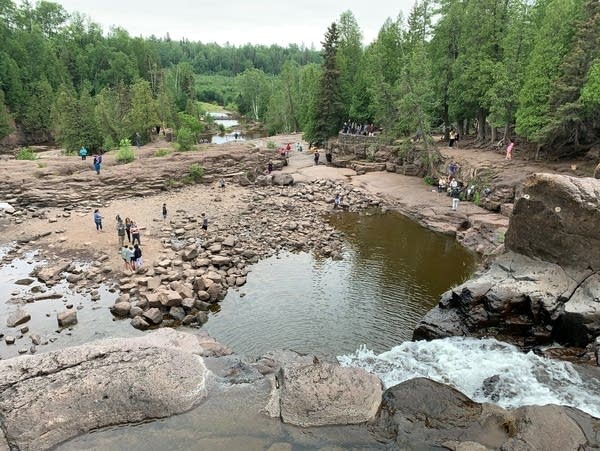Climate change is making Minnesota wetter, so what's up with this drought?

Go Deeper.
Create an account or log in to save stories.
Like this?
Thanks for liking this story! We have added it to a list of your favorite stories.
The new drought monitor report puts nearly 75 percent of Minnesota in severe drought and nearly 20 percent in the extreme category. That’s up from just over 50 percent and 3 percent last week.
Cities are asking residents to conserve water. Crops — and the farmers who tend to them — are stressed. And the lakes and waterfalls people usually flock to for cooling off aren’t quite the summer postcard we’re used to. Nature has tightened the spigot on Gooseberry Falls and Minnehaha Falls, for example.
It’s certainly not the wetter Minnesota climate scientists have previewed. So what gives?
Climate change accelerates the pace of extreme weather swings and is contributing to lags in the jet stream that keep heat waves, cold snaps and rain over an area for longer, intensifying their impact.
Turn Up Your Support
MPR News helps you turn down the noise and build shared understanding. Turn up your support for this public resource and keep trusted journalism accessible to all.
Jennifer Francis, a climate scientist with the Woodwell Climate Research Center in Massachusetts, said that’s what’s behind the heat wave in the Pacific Northwest and Minnesota, as well as the devastating floods in Germany this month.
“It was just of the opposite flavor, if you will. Instead of a big bulge northward [in the jet stream like we’re seeing in the Pacific Northwest], it was a big dip southward,” Francis said. “In fact, it dipped southward so sharply that it basically broke off and made an eddy, which you can think of as a swirl in the river that breaks off from the main stream. And once you get one of these broken off swirls, they tend to be very persistent. They tend to stay in the same place for a long time.”
So while Minnesota can expect to see warmer, wetter weather over time, it will also see these bursts of extreme weather. Think of it like a heated frying pan. If you put a little water in it, it will evaporate quickly — that’s drought. If you put a lot of water in it, it can boil violently — that’s severe storms.
To hear more on this, click play on the audio player above or subscribe to the Climate Cast podcast.


